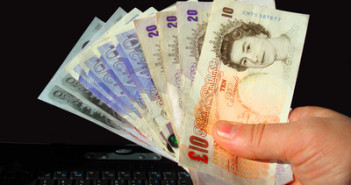With a daily trading volume of over four billion US dollar – a conservative estimate – the foreign exchange market, also known as FX or Forex market, is the most popular financial market in the world. The sheer amount of liquidity and the ability to trade it 24 hours a day, anywhere in the world are chief among the reasons for its immense popularity, as it makes the FX market easily accessible for individual and institutional investors alike.
Out of the hundreds and thousands of possible combinations of the world’s different currencies, the most liquid ones are those that are traded most frequently, also known as the “majors”. They include combinations of US dollar, Euro, Pound Sterling, Japanese yen, Canadian dollar, Swiss Franc and Australian dollar, and over 85 per cent of daily trades on the FX market occur in these major currencies. One of the most popular Forex pairs is GBP/USD, whose inverse relationship we want to examine closer below.
With a daily trading volume of roughly 15 per cent, the British Pound/US dollar pairing is not only the third most traded FX pair in the world, it is also the most volatile pair, characterised by numerous sharp movements and false breakouts during a day of trading, which makes it a risky choice for trading novices. In order to become better acquainted with the peculiarities of trading GBP/USD, it is advisable to have a closer look at the economies of the two countries, and the inverse nature of their relationship with each other.
With a gross domestic product of almost $16 trillion, the United States is the largest economy in the world, and abundant natural resources, a well-developed infrastructure and high productivity make the world’s wealthiest nation. The American economy is largely service-based, although high-end manufacturing still makes up about 15 per cent of overall economic output. The most important indicator of America’s economic health is the non-farm payroll figure, which represents the number of jobs added or lost over the last month, not including the farming industry.
Although relatively small in terms of land mass, the economy of the United Kingdom is prosperous. Measured by nominal GDP, it is the sixth-largest national economy in the world, and the third-largest in Europe. After a period of relative decline following the two world wars of the last century, the country has managed to regain much of its previously lost economic vitality, driven mostly by the country’s thriving financial sector. According to some estimates, the financial services industry makes up more than 10 per cent of the UK’s total economic output, which makes the sector a reliable indicator of the economy’s health.
As with other currency pairs, the most important factor in analysing the complex relationship between Sterling and the “greenback” is the relative strength of the respective economies. When the UK economy outperforms the US, the dollar tends to weaken against the pound. This relationship is often reflected in interest rates, so traders should pay close attention to Fed and BoE minutes and announcements. Like the UK, the US has a large financial sector which makes up a huge portion of the GDP, thus their performance is often indicative of the direction of the GBP/USD market.
Guest post by Milena Kannen who is a financial writer for IG, a leading financial spread betting and CFDs provider. For more information visit: https://www.ig.com/uk
IG accepts no responsibility for any use that may be made of these comments and for any consequences that result. Spread betting and CFD trading may not be suitable for everyone and can result in losses that exceed your initial deposit, so please ensure that you fully understand the risks involved.
